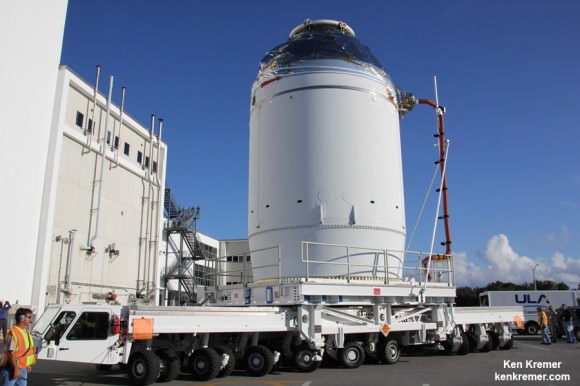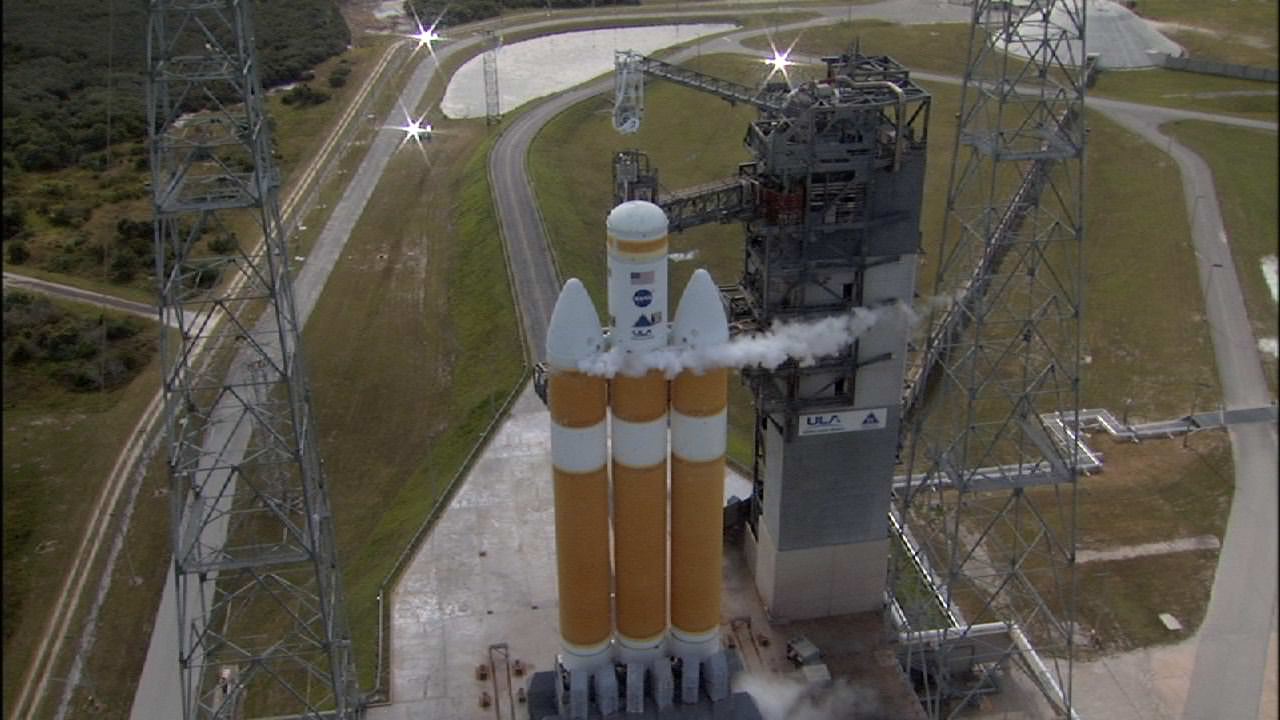The huge rocket that will blast NASA’s first Orion spacecraft into orbit is ready to Rock ‘n’ Roll on a critical two orbit test flight scheduled for December.
And Orion is so big and heavy that she’s not launching on just any old standard rocket.
To blast the uncrewed Orion to orbit on its maiden mission requires the most powerful booster on Planet Earth – namely the United Launch Alliance Delta IV Heavy rocket.
Liftoff of the state-of-the-art Orion spacecraft on the unmanned Exploration Flight Test-1 (EFT-1) mission is slated for December 4, 2014, from Space Launch Complex 37 (SLC-37) at Cape Canaveral Air Force Station in Florida.
Just days ago, the launch team successfully completed a countdown and wet dress rehearsal fueling test on the rocket itself – minus Orion – at launch complex 37.
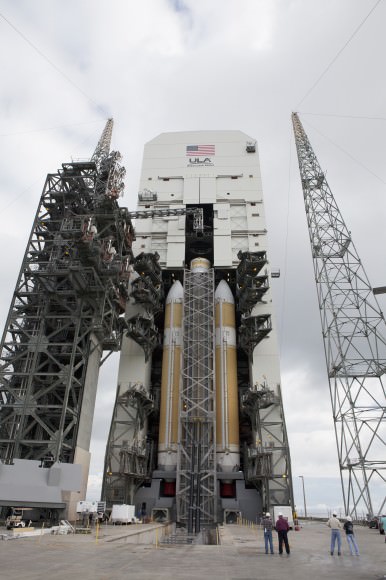
The high fidelity rehearsal included fully powering up the booster and loading the tanks with cryogenic fuel and oxidizer, liquid oxygen, and liquid hydrogen.
ULA technicians and engineers practiced the countdown on Nov. 5 which included fueling the core stages of the Delta IV Heavy rocket.
“Working in control rooms at Cape Canaveral Air Force Station in Florida, countdown operators followed the same steps they will take on launch day. The simulation also allowed controllers to evaluate the fuel loading and draining systems on the complex rocket before the Orion spacecraft is placed atop the launcher,” said NASA.
The next key mission milestone is attachment of the completed Orion vehicle stack on top of the rocket. Read more about the fully assembled Orion – here.
Today’s scheduled rollout of Orion to the launch pad for hoisting atop the rocket was scrubbed due to poor weather.
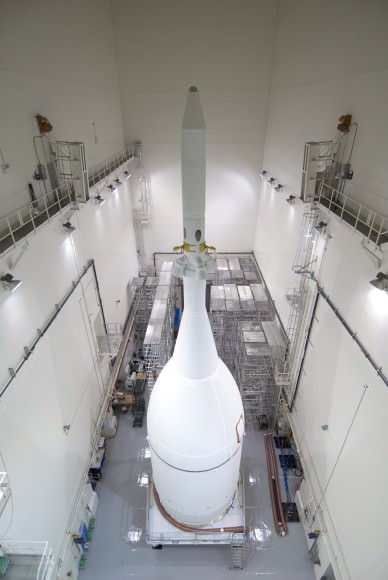
The triple barreled Delta IV Heavy booster became the world’s most powerful rocket upon the retirement of NASA’s Space Shuttle program in 2011 and is the only rocket sufficiently powerful to launch the Orion EFT-1 spacecraft.
The first stage of the mammoth Delta IV Heavy generates some 2 million pounds of liftoff thrust.
“The team has worked extremely hard to ensure this vehicle is processed with the utmost attention to detail and focus on mission success,” according to Tony Taliancich, ULA’s director of East Coast Launch Operations.
“The Delta IV Heavy is the world’s most powerful launch vehicle flying today, and we are excited to be supporting our customer for this critical flight test to collect data and reduce overall mission risks and costs for the program.”
From now until launch technicians will continue to conduct the final processing, testing, and checkout of the Delta IV Heavy booster.
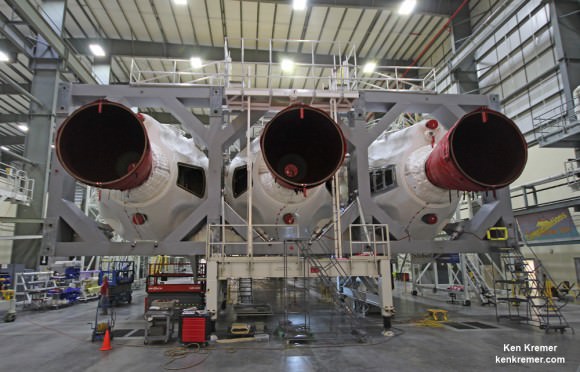
The Delta IV Heavy first stage is comprised of a trio of three Common Booster Cores (CBCs).
Each CBC measures 134 feet in length and 17 feet in diameter. They are equipped with an RS-68 engine powered by liquid hydrogen and liquid oxygen propellants producing 656,000 pounds of thrust. Together they generate 1.96 million pounds of thrust.
The first CBC booster was attached to the center booster in June. The second one was attached in early August.
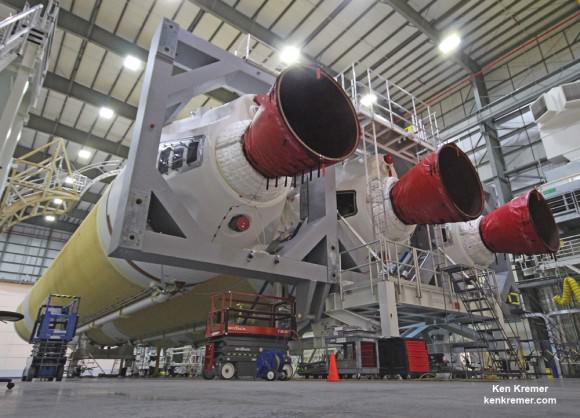
This fall I visited the ULA’s Horizontal Integration Facility (HIF) during a media tour after the three CBCs had been joined together as well as earlier this year after the first two CBCs arrived by barge from their ULA assembly plant in Decatur, Alabama, located about 20 miles west of Huntsville. See my photos herein.

Orion in orbit in this artist’s concept. Credit: NASA
Orion is NASA’s next generation human rated vehicle that will eventually carry America’s astronauts beyond Earth on voyages venturing farther into deep space than ever before – beyond the Moon to Asteroids, Mars, and other destinations in our Solar System.
The two-orbit, four and a half hour EFT-1 flight will lift the Orion spacecraft and its attached second stage to an orbital altitude of 3,600 miles, about 15 times higher than the International Space Station (ISS) – and farther than any human spacecraft has journeyed in 40 years.
“This mission is a stepping stone on NASA’s journey to Mars,” said NASA Associate Administrator Robert Lightfoot.
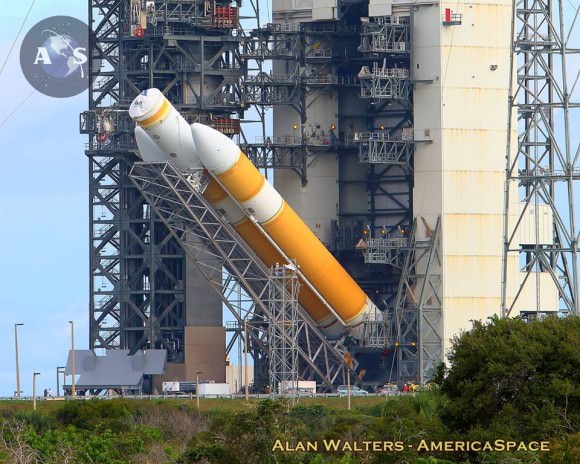
.
“The EFT-1 mission is so important to NASA. We will test the capsule with a reentry velocity of about 85% of what’s expected by [astronauts] returning from Mars.”
“We will test the heat shield, the separation of the fairing, and exercise over 50% of the eventual software and electronic systems inside the Orion spacecraft. We will also test the recovery systems coming back into the Pacific Ocean.”
Stay tuned here for Ken’s continuing Orion and Earth and planetary science and human spaceflight news.
